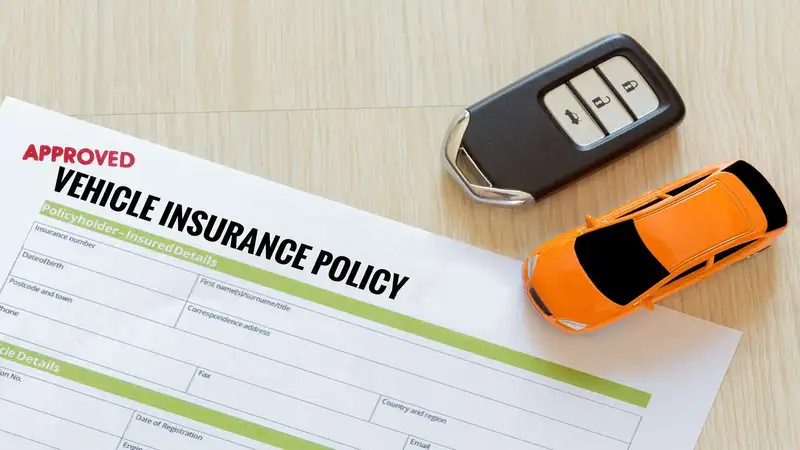Car insurance can feel overwhelming, but it's a key part of vehicle ownership. Let's simplify it with straightforward advice on coverage, providers, and policy management.
Understanding Your Coverage Types
The first step is building your auto insurance foundation: understanding coverage types. Your primary offerings tend to include:
Liability Insurance: This is mandatory in very states. It covers damages and injuries you cause to others if you're at fault in an accident. There are usually two components: bodily injury and property damage liability, which pay for medical expenses and property damage, respectively.Collision Insurance: As the name suggests, this covers damage to your own vehicle after a collision, whether with another vehicle or an inanimate object, like a tree or pole.Comprehensive Insurance: This pays for non-collision damage to your car, like vandalism, theft, or weather impacts.Personal Injury Protection (PIP) and Medical Payments: Some form of medical coverage is valuable. PIP assists with medical costs from a car accident for you and your passengers. It sometimes also covers lost wages.Uninsured/Underinsured Motorist Coverage: If an at-fault party doesn't carry enough insurance (or any at all), this coverage can help pay for repairs and medical expenses.Customize your package for your situation. If you have an older, paid-off vehicle, comprehensive insurance may not be cost-effective. For new or financed vehicles, going beyond the minimum often makes sense.
Tips When Choosing an Insurance Provider
Research Reputations: Company reputation is critical. Look for insurers with good customer satisfaction ratings and solid financial strength to ensure they can pay your claims. Check resources like J.D. Power and AM Top for ratings.Compare Pricing: Quotes can vary widely. Gather rates from multiple insurers; ensure you’re comparing equitable coverages when judging costs. Factor in any discounts for things like good driving records or security features on your car.Read the Fine Print: Understanding policy minutiae is paramount. Don’t let jargon deter you—ask questions about unclear terms. Ensure nothing essential is excluded from your policy and that you understand the claim process.Assess Customer Service: Check if they provide 24/7 claim reporting. Strong customer service often means quicker responses following an incident. Online reviews and word of mouth can indicate service standards.Consider Extras: Many insurers offer roadside assistance, accident forgiveness, or safe driver rewards. While these may increase costs, weigh if the extra protection and perks are valuable to you.Managing Your Car Insurance
Managing car insurance effectively involves regular assessment and updates.
Keep Your Policy Current: As your life changes, so do your insurance needs. Regularly review your policy, particularly after significant life events, such as moving or the addition of a new car or driver to your policy.Handle Payments Responsibly: Late payments might result in a lapse in coverage, which can be quite risky. Set reminders to pay your premium on time or enroll in auto-pay features to avoid mistakes.Document Everything: If you’re in an accident, document everything. Take photos at the scene and collect witness information if possible. Secure documentation can expedite the claim process.Annual Review: Your renewal period is an excellent time for an insurance review. Have your circumstances changed substantially? Is your current coverage appropriate? Could you be eligible for additional discounts?Understand the Claim Process: Be aware of how to file a claim and what information is needed. Remember, prompt and accurate claim submission helps ensure efficient resolution.Rally For Discounts: Always ask about discounts or loyalty perks. Regular factors qualifying for discounts include clean driving records, bundled insurances (like home and car), safety features on the vehicle, and even good credit scores.Extra Tips:
- If you're a low-mileage driver, you may save if your provider offers usage-based insurance.
- Track your car’s value and consider dropping certain coverages, like collision or comprehensive, if the premium costs more than the car's value over time.
- Drive safely! It’s simple advice, but fewer accidents and infractions can lead to lower premiums.
A fast-paced lifestyle means managing car insurance can often slip through the cracks. However, using these guidelines to align coverage with your driving habits, exercising vigilance when choosing an insurer, and actively engaging in policy maintenance, ensures solid protection and peace of mind.
Ultimately, think of your car insurance not as a grudging obligation but as a carefully hewn safety net, tailored just for you and your identified risks on the road. Using coverage strategically keeps you ahead, pointing your headlamps firmly at the secure route ahead, filled with mindfulness rather than mishap.















